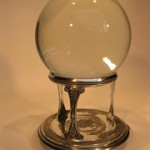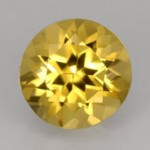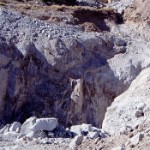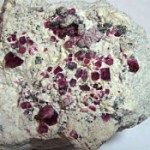Crystal, Crytstal, Crystal
Everywhere I look these days, crystal stares me in the face. maybe once a thing is in your mind, you become more observant of it. Crystal was to be my theme until I came across a beautiful crystal ball. Very small, very expensive,a (scryers) dream.
How and why over many generations did crystal become the medium for psychics and fortunetellers of all ilk? So we delve into the history of “the Crystal ball” not as jewelry, but as the path to the subconscious. ( We will get back to the actual gemstone as well)
The first gemstone used as a crystal Ball was beryl.
Pure Beryl is colorless; traces of different impurities are responsible for the color diversity and varieties.
History has deemed the first people to use crystals for divination were the Druids in Britain about 2000 BC. The Druids were a very spiritual people. They were priests, teachers, counsellors to the Kings. They believed beryl had special powers. It was used to read the furure as well as advise of the past. The clearer the stone the better.
(Lately there have been discoveries claiming that crystal balls have been in use even longer, in Eygpt and possibly even by the Mayans.)
In the middle ages in Europe crystal balls were being used by fortune tellers and seers. Eventually beryl would be replaced with rock crystal which is even more translucent. ( I really wonder if the same powers could be asscribed to rock crystal)
A well known Royal councellor to Elizabeth 1, Dr. John Dee, used a crystal ball in his work. He believed the crystal acted as a communication device between him and Angels. ( There is actually one of his quartz balls in the British Museum)
Which brings us more into modern day thinking. Today crystal balls are used as point of concentration that clears the mind and opens the road to the subconscious. A gifted psychic will be able to see visions and possibly tell the future. Most of us will see a mist and sometimes a vision. Then we have to interpret the vision….
It is very interesting to try seeing in the ball, maybe if we could get a real beryl it might actually work.
I have a feeling it is not so much the ball as the actual person doing the reading or whatever, that determines the vision.
(By the way, did you know you can buy a crystal ball at Amazon!? Is there anything Amazon doesn’t sell?…)
Let’s get back to the true gemstone. Beryl.
Some varieties of beryl are:
Emerald, one of the most valuable gemstones, a beautiful green color.
Aquamarine, light blue gemstone.
Morganite, pink to light purple, was named after J.P. Morgan. Hmm…
Heliodor, yellow to greenish yellow, also some light green and brown.
Goshenite, white to colorless
Golden Beryl, golden yellow to orange yellow
Red Beryl, very rare, also known as Bixbite, deep red
In the Smithsonian Institute in Washington D.C. located in the “Hall of Gems” is one of the largest cut beryl stones in the world. It is a 2,054 carat flawless, golden colored beryl, also known as Heliodor.
While golden beryl is beautiful I found Red beryl more fascinating.
Laboratory analysis shows that manganese and small amounts of iron, chromium, and calcium create the raspberry-red color of red beryl.
Red Beryl or Bixbite is very interesting as it is found in only three places in the world. The Thomas mountain range and the Wah Wah mountain range in Utah, USA, as well as the Black Range in Mexico. The Wah Wah mountians Ruby-Violet claims are the only known place where large, gem quality red beryl can be found. They are private and closed to outsiders.
This very rare gemstone is estimated to be worth 1000 times more than gold. The claim is that for every 150,000 diamonds found there is only one red beryl crystal found. A faceted red beryl crystal from the Wah Wah location sells for an average of $2000.
(For the last few years the Ruby Violet Claims have been inactive. The price tag on the property is so enormous that no one has stepped forward to buy the mine. Dwindling supplies, already quite limited, have pushed prices to even higher levels. Rumors about a new prospect being opened elsewhere in the Wah Wahs have been circulating since Tucson 2010, but have yet to be confirmed, and no new material surfaced. ) http://www.treasuremountainmining.com
So we have a gemstone rarer than diamonds, more valuable than gold. Wow!
Here is what it looks like in it’s natural form.
Well I started out with crystal and ended up with red beryl. I think it is time to gaze into my crystal ball and see where we go from here.
Until next time, Have a great day.
Erma




